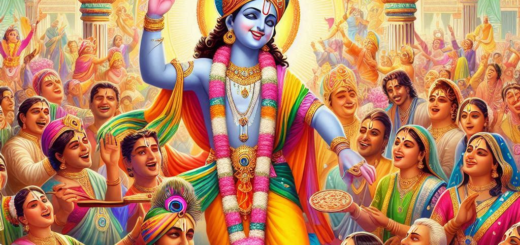What is Hindu Culture
To describe the Hindu culture.
Every culture is a reflection of the thoughts and ideology of its people – its thinkers who had shaped it.
The first and most important aspect of Hindu thought and culture is
Ekam Satya – Bahudha Vadanti Viprah
Meaning, there is only one Truth – which is defined differently by different teachers – wise and learned scholars.
This thought makes Hindu culture the most tolerant culture.
It allows Hindus to respect every other culture and not criticize them.
That’s why they can live peacefully in any society and country – along with people from different cultures.
They can respect and adapt to other cultures quickly and yet able to maintain some distinctive and valuable features from their own culture as well.
The second fundamental teaching of Hindu culture is:
Tamaso ma – Jyotir Gamay
Asato ma – Sad Gamaya
Meaning: Not darkness, but move towards the Light.
Follow the Truth – Not falsehood.
This doctrine helps Hindus to seek new truths – to embrace new concepts, ideologies, and new scientific theories quickly. This is why Hindus have never been against science or new experiments and discoveries.
Another significant and fascinating aspect of Hindu culture is the belief that nature is the manifestation of All-Pervading, Almighty God.
Therefore, they have immense respect for nature and all other beings.
During my childhood – I remember seeing one unique aspect of my grandmother’s daily routine, which was common among all Hindus in the olden days.
Every day, while making Rotis for the family, she would always keep the first four Rotis aside – one for the Kul-Purohit (Family Brahman priest), one for the cow, one for the dogs, and one for the crows.
In the olden days, when there were no schools in villages, people would send their children to the Brahmin priest for learning. They never charged any fee for the teaching, nor they had any other means of earnings. People in their Communities would provide them food and other necessities voluntarily – according to their capacity and desire.
However, there is an interesting concept behind cooking and offering food to Cows, dogs, and crows every day.
Cows are considered sacred – among the higher level of creatures because they provide milk, which suits quite well to humans also. Milk is regarded as a complete diet – as it can provide protein, essential vitamins, and necessary minerals for toddlers and even newborns.
Now, because the mother provides milk to her children – the cow is granted the same status as the mother – the highest regard.
Dogs, unlike in the west, were regarded as a lower level of creatures in India – a symbol of greed, violence, lust for territorial control, and hostility toward their own kind.
Crow is usually regarded as a repulsive ugly creature with an unpleasant tone.
Every day, four Rotis were kept aside for different types of creatures – from higher to lower – from beautiful to ugly – and from the giver to the violent taker, showing the regard and compassion for all kinds of beings.
Respect for all beings and cultures of other communities – for their beliefs and lifestyle – and urge to explore and adopt new Truths as we advance – are some of the main characters of Hindu culture that make them humble, tolerant, open-minded, and peaceful people.
In short, following Dharma, the eternal duties, such as honesty, charity, tolerance, patience, self-control, Ahimsa (non-violence), and compassion, etc. are an essential part of Hindu culture.
‘Rajan Sachdeva ‘
Source: Rajan Sachdeva


Recent Comments